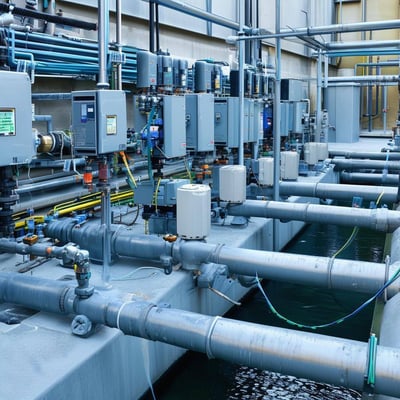
When ranking environmental conditions for wastewater operations, it's essential to prioritize those that directly impact the efficiency and safety of wastewater treatment processes.
Based on the provided information and general knowledge of wastewater operations, here is a ranked list of environmental conditions:
- Water Quality: Monitoring pollutants such as nitrogen, phosphorus, heavy metals, and pathogens is crucial for ensuring compliance with discharge permits and protecting aquatic ecosystems[3][5].
- Chemical Spills: Detecting hazardous chemicals is vital to prevent contamination and ensure safe treatment processes[4][5].
- Temperature and Humidity: These conditions can affect biological processes within treatment facilities, impacting treatment efficiency[1].
- Air Quality: Monitoring gases like hydrogen sulfide is important for odor control and worker safety in wastewater facilities[1].
- Salinity: High salinity levels can interfere with biological treatment processes and increase corrosion in infrastructure[1].
- pH Levels: Maintaining appropriate pH levels is critical for biological treatment processes and preventing corrosion[5].
- Vibration: Monitoring vibrations can help detect equipment malfunctions or structural issues within the facility[1].
- Flow Rates: Changes in influent flow rates can affect treatment efficiency and require operational adjustments[1].
- Dew Point: This can influence condensation and corrosion in facilities, affecting equipment longevity[1].
- Ground Movement: Monitoring for ground movement can help prevent structural damage to treatment facilities[1].
- Radiation Levels: While less common in typical wastewater operations, monitoring for radiation is important in areas near nuclear facilities[4].
- Soil Conditions: Relevant for facilities with land application of treated wastewater or biosolids[5].
- Wind Speed and Direction: Important for odor dispersion modeling and assessing the impact of emissions[1].
- Light Intensity: Can be relevant for photodegradation processes in advanced treatment systems[1].
- Occupancy and Motion: Useful for security and operational monitoring within treatment facilities[1].
This ranking prioritizes conditions based on their direct impact on wastewater treatment processes and regulatory compliance.
Citations:
[1] https://www.waterboards.ca.gov/conservation/regs/docs/task5-wastewater-excerpt.pdf
[2] https://rsbenv.com/what-are-the-environmental-issues-of-wastewater
[3] https://www.epa.gov/nutrientpollution/sources-and-solutions-wastewater
[4] https://www.epa.gov/npdes/industrial-wastewater
[5] https://www.deq.idaho.gov/water-quality/wastewater/



